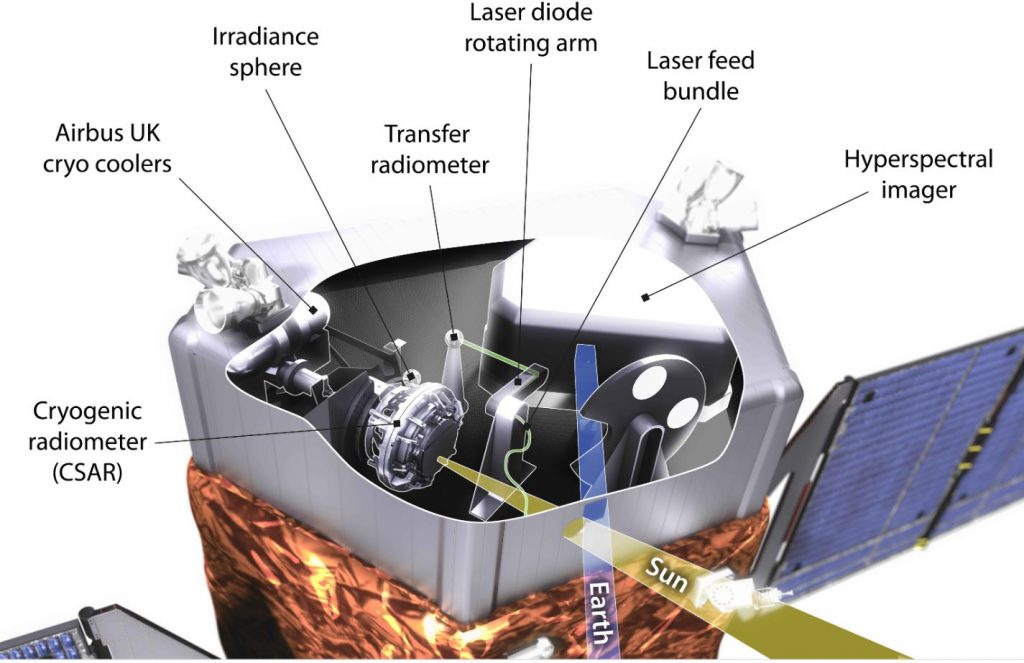Lead Organisation: NPL Management Ltd
Partners: Airbus DS Ltd.
To enable CSAR to provide the radiometric calibration of the Earth & Sun viewing imaging spectrometer, a novel calibration procedure utilising monochromatic radiation has been devised, mimicking that used terrestrially at National Metrology Institutes such as NPL. This full calibration system will be designed and built to space consistent constraints: scales, materials, mechanism types etc and fully tested in vacuum with the new HPSC cooled CSAR. This calibration system will look to demonstrate calibration uncertainties of <0.3% for spectral radiance and irradiance over the Visible to SWIR spectral range, greater than a factor ten better than has been achieved for any previous EO mission (although downgraded from that achievable using optimised terrestrial technologies (0.02%)) resulting in a TRL of 5/6.

Deliverables and Conclusion
The CEOI8 project’s major deliverable was to increase the TRL of this concept through building a lab-based ‘flight representative’ prototype of CSAR (including coupling to Airbus HPSC space cooler) and a breadboard calibration system, both tested under vacuum, demonstrating technology readiness level (TRL) 5/6, as well as an engineering assessment of the feasibility and reliability of a space-qualified version of the TRUTHS payload and some consideration of implementation options. The work was extended to include more detailed mission analysis including ROM costings, together with a study to demonstrate achievable uncertainties when used in cross-calibration of spectrometer based sensors like Sentinel 3 OLCI.
All project objectives were achieved, providing demonstrable evidence that the mission could be readily implemented utilising heritage or low risk incremental technology developments and fully meet its performance goals.
The conclusion of this project will mean that all key technologies and concepts needed for TRUTHS will be at TRL 5/6 with little risk to implementation remaining. In addition key sub-systems like the HPSC and VANTA black coatings will have a wider range of applications in the space sector, Earth Observation and space science leading to economic return to the UK. The HPSC, will be able to continue and expand the market lead of its predecessor the 50-80K cooler, emphasising its strengths over competing technologies such as pulse tubes from elsewhere in Europe.
Read the Projects Final Report Executive Summary


